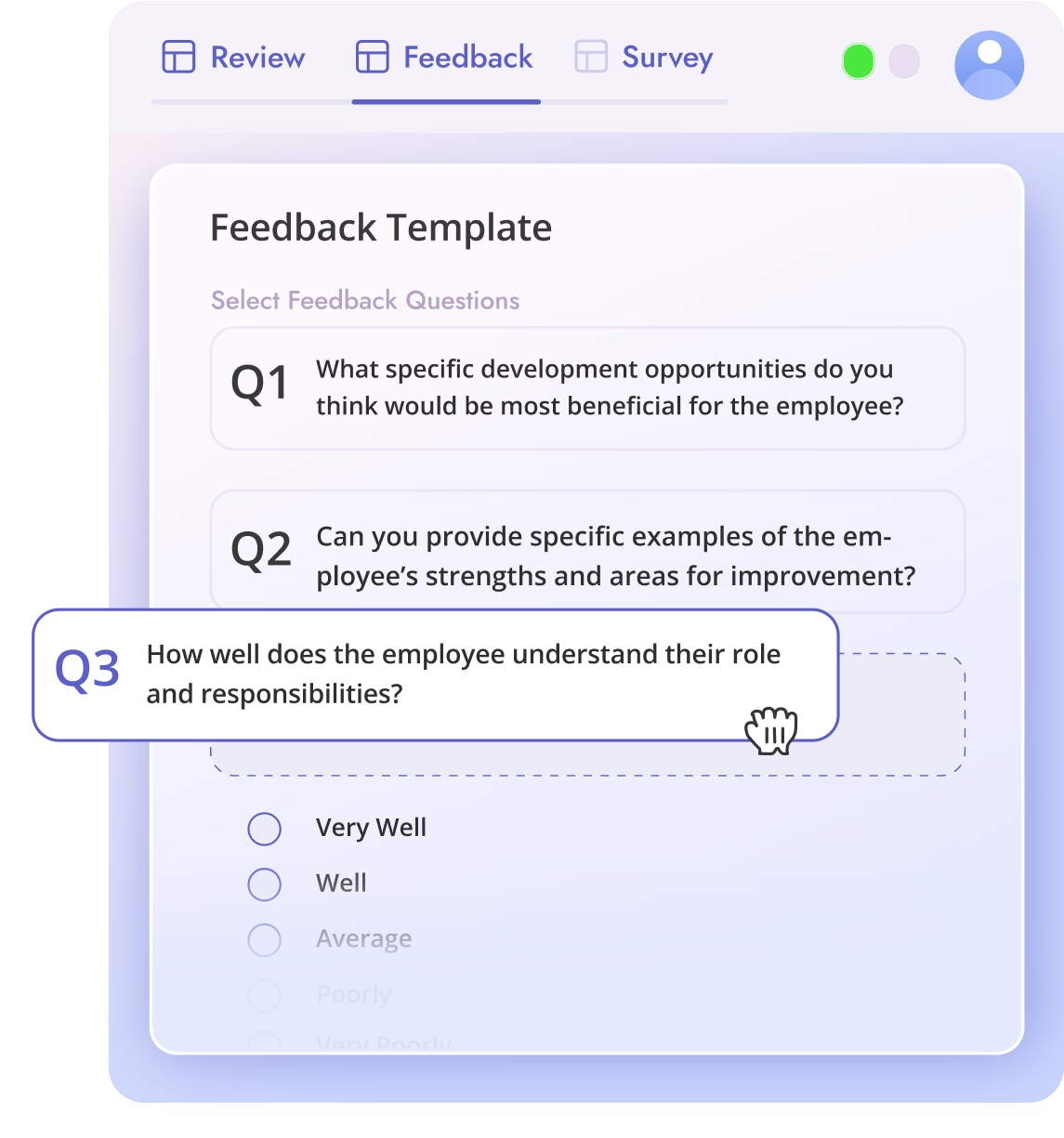The Developmental Feedback Template supports employee growth by guiding thoughtful feedback on strengths, improvement areas, and specific development opportunities. Whether it comes from managers, mentors, or peers, this input helps spark meaningful career conversations and shape future learning plans.
Delivered through Teamflect in Microsoft Teams and Outlook, the template makes it easy to share feedback with clear context.
.avif)
Strengths & Improvement Examples
Open-ended questions help feedback givers share specific examples of what the employee does well and where they can grow, making feedback clear and actionable.
Development Opportunity Suggestions
Encourages development by recommending learning opportunities, new skills to build, or behaviors to adjust.
Project-Based Development Ideas
Invites ideas on tasks or projects that can help employees stretch their abilities and practice new skills on the job.
Role Understanding & Initiative Ratings
Multiple-choice questions assess how well the employee understands their responsibilities and takes ownership of their growth.
Learning & Adaptability Ratings
5-star scales measure how effectively the employee learns new skills and adapts to change or challenges.
Constructive, Growth-Centered Design
Designed to promote constructive, ongoing conversations that focus on development, not just past performance.
1. Use during mid-cycle reviews, mentoring check-ins, or project wrap-ups
Ideal for use during mid-cycle evaluations, mentoring discussions, or project completions, the questions are structured to facilitate continuous feedback beyond formal performance review periods.
2. Tailor questions for specific roles or departments
You can customize the development suggestions to better reflect technical, leadership, or creative skill sets.
3. Share feedback inside Microsoft Teams
Employees and feedback providers never need to leave the platform, making continuous growth part of everyday collaboration.
4. Link feedback to development plans or IDPs
Use this feedback to populate future goals or action items in Teamflect’s individual development planning tool.
Best for:
With the Developmental Feedback Template, you transform feedback into forward momentum, cultivating a culture where growth is intentional.
Reducing Turnover with IDPs: The Link Between Development and Engagement
Creative ways to support employee development beyond performance reviews

The purpose of employee development feedback is to provide employees with information on their strengths and areas for improvement, in order to help them grow and develop their skills and abilities in their roles. This feedback helps the employee to understand their strengths, weaknesses, and areas for improvement, and to set goals and develop plans for professional development.
It is generally given on a regular basis, such as during performance reviews or in regularly scheduled meetings. It can also be given as needed, based on the employee's specific development needs.
Employee development feedback contributes to the company by helping to improve employee performance, helping employees change their own development strategies, and shaping training strategies around employee performance. This helps the company to maintain a competitive advantage and achieve its goals.
Employee development feedback may include feedback on an employee's progress towards meeting specific goals or objectives, or feedback on soft skills such as adaptability, learning agility, and emotional intelligence that are becoming more and more important
When writing about areas of development on a performance review, focus on specific skills or knowledge the employee can improve. Provide actionable recommendations or resources to support their development and frame the feedback constructively.
Your developmental comments for employees should always be written in a positive manner. When offering employee development feedback, you need to make sure you aren't criticizing for the sake of criticizing. Your aim should always be to foster growth.